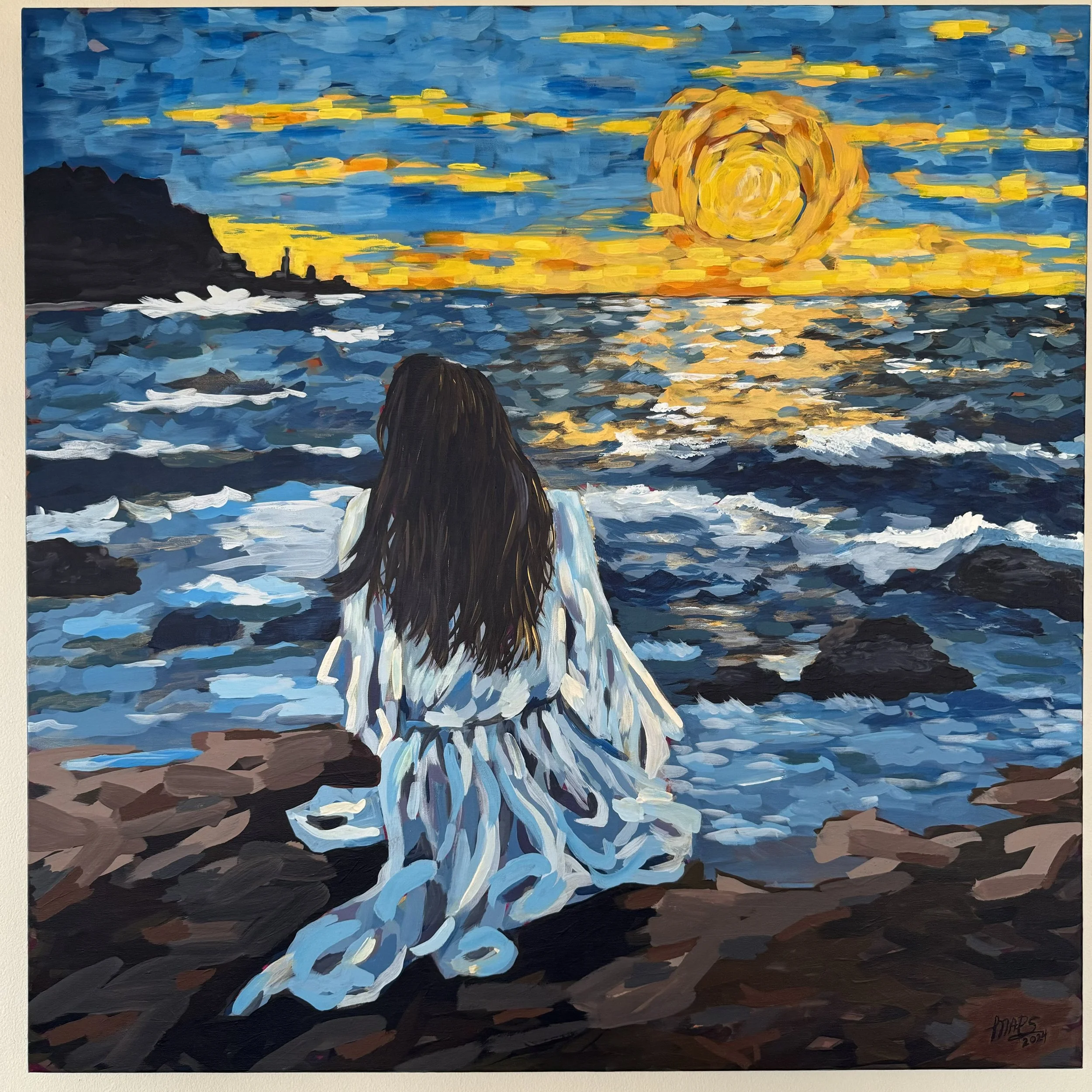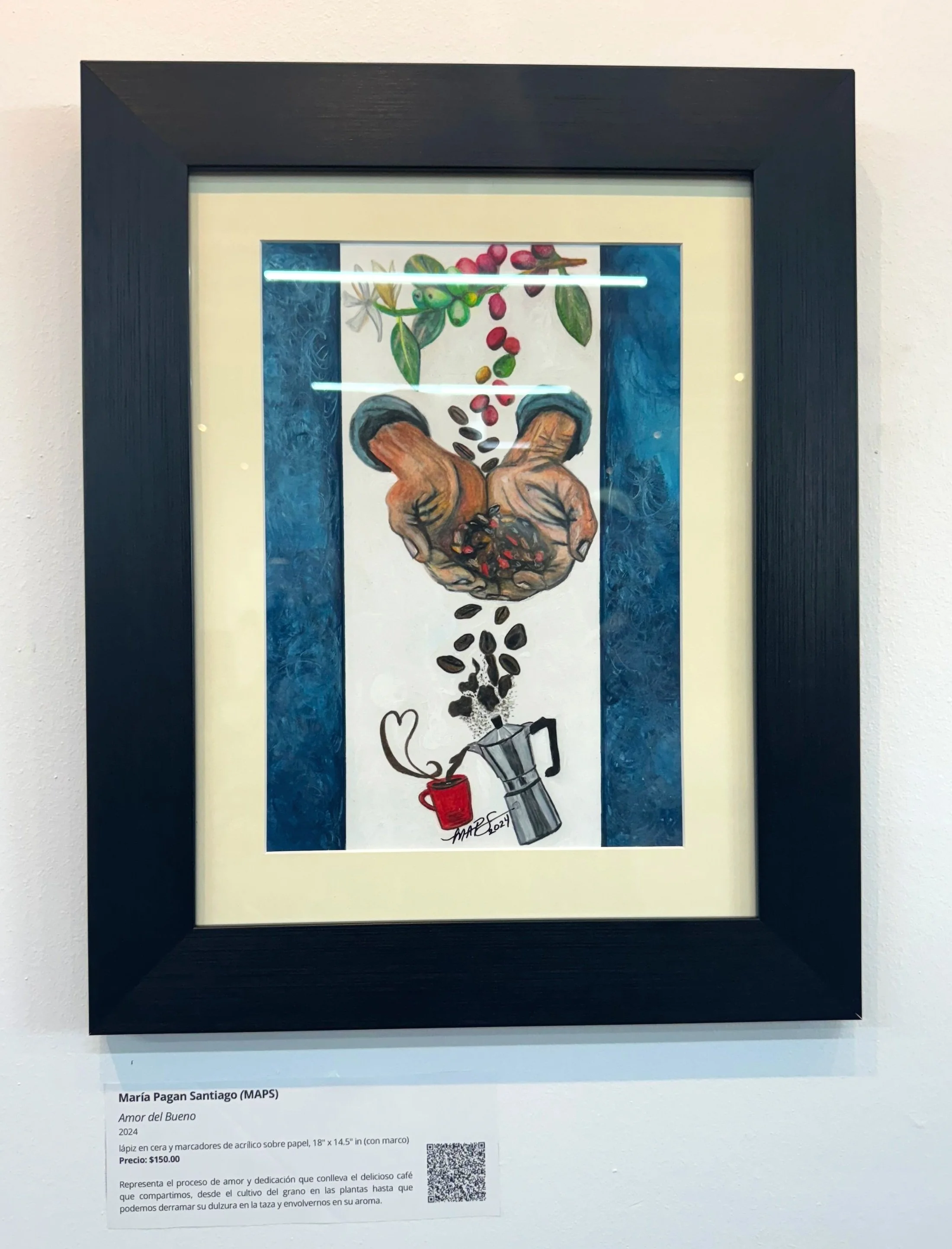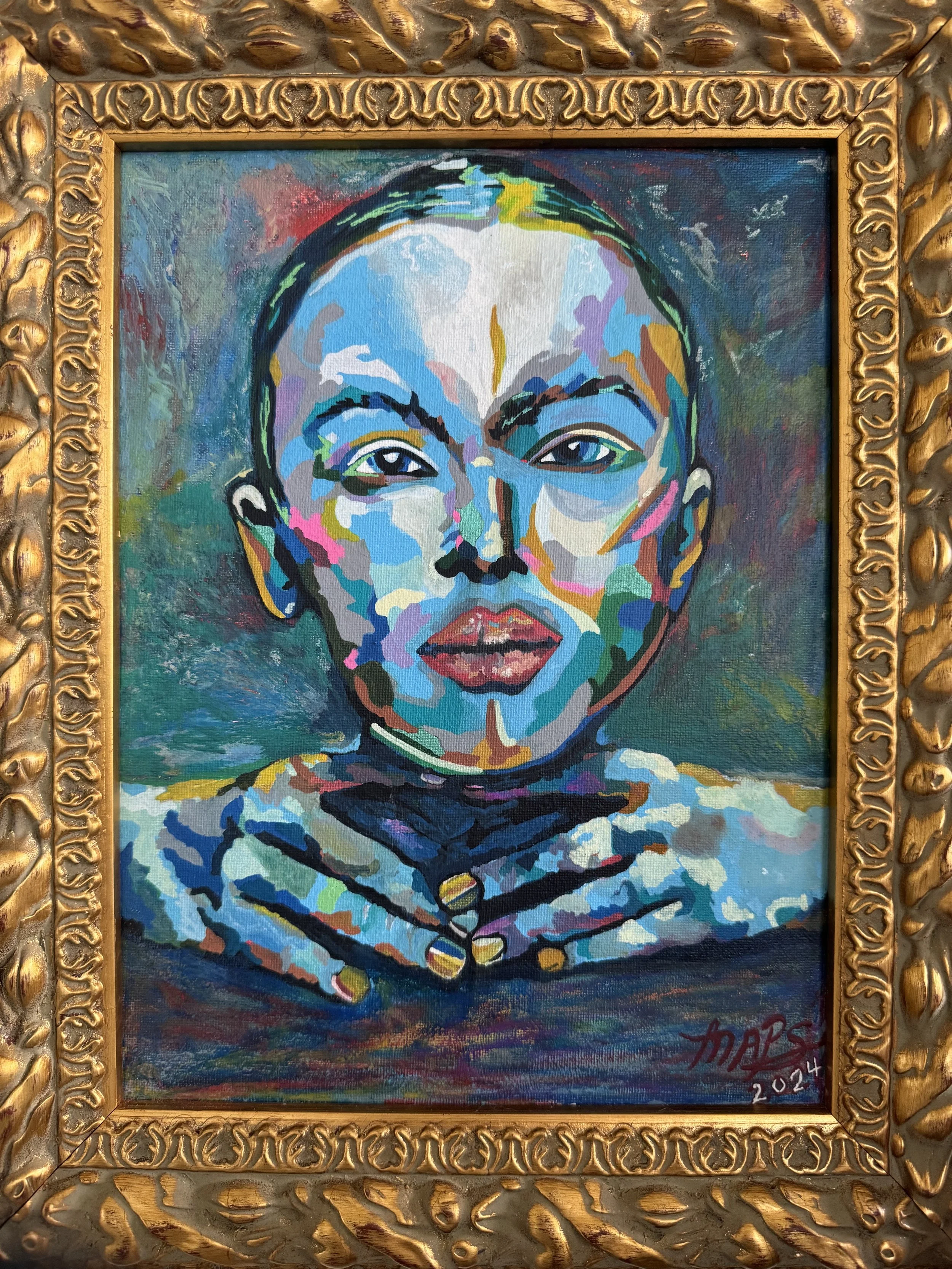“Practice makes progress:” Empowering Artists Through Identity and Mental Health
An interview with artist and medical school graduate María Pagán
By Marlee Sidor
María Pagán is a Puerto-Rican born artist. In this interview, she shares her inspiring journey into the arts, the role of mental health in the creative process, and how her cultural identity shapes her work. Her unconventional change in career paths—from a medical school-graduate to an artist—provides invaluable insight for emerging artists, especially those of color.
Pagán’s heartfelt initiative, Ser Latinas, is dedicated to empowering Latina women and girls, particularly those striving to attend college or pursue their dreams. Founded with the aim of addressing the challenges of navigating education and life without financial support, the project aspires to help young Latinas overcome barriers and achieve their goals.
“The scholarship is inspired by my own college experience. I remember my mother giving me a piggy bank filled with pennies that had been collected over the years. We took it to the bank and the teller counted exactly $600 in pennies. This was enough for me to pay for the boat to the Dominican Republic and take care of myself for a few weeks.”
This memory has shaped her vision to one day offer scholarships to young women passionate about their education and careers, giving them the opportunity to succeed and thrive.
This interview explores her journey, her art, and how her experiences have influenced her mission to inspire and uplift others.
Marlee Sidor: Can you share a bit about your journey into the arts? What inspired you to start creating?
María Pagán: My art journey began in 2020 during the COVID-19 pandemic. When quarantine started, I was filled with anxiety and uncertainty. The days were long and I suddenly had way more time on my hands than usual. I asked myself, “What’s one thing I’ve always wanted to try but never had the time for?” And that’s when I started creating art.
I never had the opportunity to take formal art classes when I was younger—I’d only done my sister’s art homework for her (she got an A)—so I taught myself using online resources like YouTube and Google. I ordered colored pencils and cheap canvases from Amazon and just started to create. My first pieces had a lot of mistakes, but I cherish them because they symbolize taking that first step, even in the face of uncertainty.
MS: You studied medicine in the Dominican Republic. How does your background in medicine influence your art?
MP: I’ve always loved creating portraits, focusing on capturing the unique features of each individual. My medical background influences my art as I strive to represent people’s stories and bring them to life. I vividly remember moments in the ER, where I had the responsibility of delivering life-changing news to patients’ families.
One of my pieces, Renacer (“Rebirth”), depicts a woman looking at the sunset, symbolizing the opportunity to reflect on the day and embrace the chance to try again tomorrow. It’s a piece about introspection and renewal—concepts that resonate strongly with the themes I explore in my work.
Renacer
MS: How does your cultural identity impact your art?
MP: My cultural and ethnic identity is at the heart of my art. As a Latina woman, I feel it’s important to share the stories of all women, especially since history often erases or downgrades our achievements. I focus on portraying women from various cultures, whether they’re artists, astronauts, teachers, or musicians.
I remember a conversation with my niece, where she told me she believed she couldn’t pursue a career in medicine other than being a nurse because it was “a man’s job.” That experience really shaped my desire to empower young girls and women through my art, showing them that they can achieve anything.
MS: Looking ahead, how do you see your work evolving? Are there new themes or mediums you want to explore?
MP: I’m always experimenting with new styles and mediums. I’ve recently tried surrealism and pop art, and I enjoy the process of exploring new techniques. My main focus remains on realistic art and acrylic painting, but I don’t restrict myself. I think it’s important to keep practicing and exploring until you find what you truly love. As I continue to learn and grow, I want to stay true to my roots while also challenging myself with new ideas and methods.
MS: What challenges have you faced as an artist?
MP: One of my biggest challenges has been dealing with impostor syndrome. Even though I’ve had my work accepted into exhibitions and competitions, I sometimes feel like I’m not good enough. The self-doubt can be overwhelming, but I’ve learned that the most important thing is to keep going. I was initially scared to submit my work, but I realized that regret from not trying is worse than rejection. And even if my art wasn’t accepted, I still had the satisfaction of creating something I was proud of.
MS: How prevalent are mental health issues within your artistic community, and how do you use your art to cope with or address these struggles?
MP: Mental health issues are definitely prevalent in the artistic community. Many of my colleagues have shared that art has been their lifelong pursuit and primary source of income. They make a living from selling their artwork, which is incredible, but many people underestimate the time, effort, and emotional investment it takes to create. This leads to undervaluation of artwork, making it difficult for many artists to sell their pieces at full price. The resulting financial insecurity increases stress and anxiety.
For me, art serves as both an outlet and a coping mechanism. When I’m stressed, painting becomes my escape. I always carry around a small notebook or canvas with colored pencils and acrylic markers wherever I go, allowing me to release emotions and quickly sketch out inspirations. The process of creating helps me clear my mind, manage strong emotions, and bring me peace. I often lose track of time while painting, and when I’m done, I feel accomplished and relieved. It’s not just about the final piece—it’s the therapeutic process that brings a sense of purpose.
MS: What role does community support play in the mental health of artists of color?
MP: Community support is incredibly important for all artists. Art isn’t just about recognition—it’s about sharing what’s in our hearts. When people appreciate and connect with our work, it validates our experiences. For artists facing financial insecurity or mental health challenges, community engagement can reduce stress and provide essential support. It’s more than just purchasing art—it’s about fostering a network of solidarity and shared understanding.
MS: Do you see your work as a form of advocacy for mental health awareness, particularly in communities of color?
MP: Definitely. I hope my art can start conversations about mental health, especially in communities that often don’t have a platform to share their struggles. Many of the role models we see in the media are already rich and successful, and they rarely discuss the mental health issues they may have faced. I want my work to reflect the realities of people from disadvantaged backgrounds and create space for them to be proud of who they are, where they come from, and the obstacles they’ve overcome.
MS: Finally, what advice would you give to young artists of color, especially in relation to both their artistic careers and mental health?
MP: Just keep painting. Don’t let fear of rejection or self-doubt stop you. Practice makes progress. It’s not about being perfect—it’s about expressing yourself and continuing to grow as an artist. Surround yourself with a supportive community, and remember that your voice matters. Do things for yourself, not others. That’s how you’ll truly improve and take care of your mental health.









